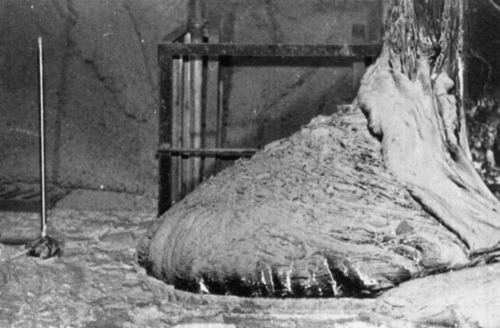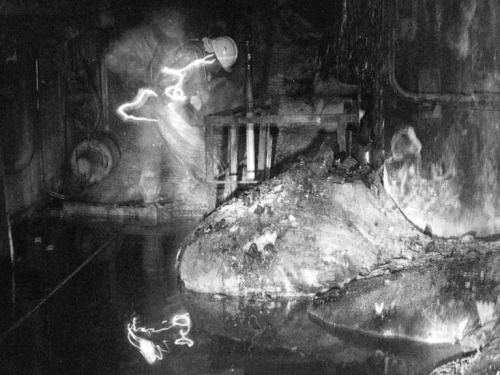The Brain Can Reveal Drinking Status Even After Death
The Brain Can Reveal Drinking Status Even After Death
Scientists who use postmortem brain tissue to study alcohol’s effects on brain structure and function will find this research interesting. Phosphatidylethanol (PEth) is an alcohol metabolite and its concentration in whole blood samples is a biomarker of drinking habits. For this study, scientists examined PEth levels in postmortem brains of individuals known to have had alcohol use disorders (AUDs).
Researchers divided 30 postmortem brains into three groups: 10 with AUDs that had positive serum alcohol levels present at the time of autopsy; 10 with AUDs that did not show positive serum alcohol levels at the time of autopsy; and 10 normal brains. PEth levels were measured in the cerebellum and orbital frontal cortex (OFC) regions.
Results showed that PEth was present in the cerebellum and OFC of all brains in all three groups of subjects, including the controls. The AUD group with detectable serum alcohol levels at the time of autopsy had much higher levels of PEth in both brain areas than either the control group or the AUD group whose subjects did not have detectable serum ethanol at autopsy. Thus, the ability to measure PEth levels in postmortem human brains can be helpful in classifying drinking status in individuals with AUDs at the time of death.
More Posts from Science-is-magical and Others


One of the most dangerous pictures ever taken - Elephant’s Foot, Chernobyl. This is a photo of a now dead man next the ‘Elephant’ Foot’ at the Chernobyl power plant.
The image distortions in the photo are created by intense level of radiation almost beyond comprehension. There is no way the person in this photo and the person photographing him could have survived for any more that a few years after being there, even if they quickly ran in, took the photos and ran out again. This photo would be impossible to take today as the rates of radioactive decay are even more extreme now due to a failed military experiment to bomb the reactor core with neuron absorbers. The foot is made up of a small percentage of uranium with the bulk mostly melted sand, concrete and other materials which the molten corium turns into a kind of lava flow. In recent years, it has destroyed a robot which tried to approach it, and the last photos were taken via a mirror mounted to a pole held at the other end of the corridor for a few seconds. It is almost certainly the most dangerous and unstable creation made by humans. These are the effects of exposure: 30 seconds of exposure - dizziness and fatigue a week later 2 minutes of exposure - cells begin to hemorrhage (ruptured blood vessels) 4 minutes - vomiting, diarrhea, and fever 300 seconds - two days to live

As Ars has reported previously, scientists have found that triclosan and other antimicrobial soaps have little benefit to consumers and may actually pose risks. These include bolstering antibiotic resistant microbes, giving opportunistic pathogens a leg up, and disrupting microbiomes. In its final ruling, issued Friday, the FDA seemed to agree. “Consumers may think antibacterial washes are more effective at preventing the spread of germs, but we have no scientific evidence that they are any better than plain soap and water,” Janet Woodcock, director of the FDA’s Center for Drug Evaluation and Research (CDER), said in a statement. “In fact, some data suggests that antibacterial ingredients may do more harm than good over the long-term.”
[…]
The ruling does not affect alcohol-based hand sanitizers or wipes, which the agency is reviewing separately. It also does not affect antiseptic products used in healthcare settings.


Timelapse of Europa & Io orbiting Jupiter, shot from Cassini during its flyby of Jupiter

Physicists Detect Gravitational Waves, Proving Einstein Right
On Thursday (Feb. 11, 2016) at 10:30 a.m. ET, the National Science Foundation will gather scientists from Caltech, MIT and the LIGO Scientific Collaboration in Washington D.C. to update the scientific community on the efforts being made by the Laser Interferometer Gravitational-wave Observatory (LIGO) to detect gravitational waves.
But why is this exciting? And what the heck are “gravitational waves”?
Keep reading

A bizarre new species of marine worm lacks a number of internal features common to other animals — including an anus, new research shows.
Why do we not discuss clouds more?

I mean look at that. That’s water.

Flying water.

FLYING

FUCKING

WATER
LIKE WHAT THE FUCK, WHY DO WE EVER STOP TALKING ABOUT THIS
WHAT IS THIS
HOW IS THIS EVEN

AND NOW THE FLYING WATER IS EATING A MOUNTAIN
GOD DAMN, WHAT
-
 pleasurehunter2000 liked this · 4 years ago
pleasurehunter2000 liked this · 4 years ago -
 asemifunctioninghuman liked this · 6 years ago
asemifunctioninghuman liked this · 6 years ago -
 science-is-magical reblogged this · 8 years ago
science-is-magical reblogged this · 8 years ago -
 theheartofmed reblogged this · 8 years ago
theheartofmed reblogged this · 8 years ago -
 lauriesmcg-blog liked this · 8 years ago
lauriesmcg-blog liked this · 8 years ago -
 aurora-reina liked this · 8 years ago
aurora-reina liked this · 8 years ago -
 ihearthillary reblogged this · 8 years ago
ihearthillary reblogged this · 8 years ago -
 kenza-hmdch-blog liked this · 8 years ago
kenza-hmdch-blog liked this · 8 years ago -
 tilthy reblogged this · 8 years ago
tilthy reblogged this · 8 years ago -
 tilthy liked this · 8 years ago
tilthy liked this · 8 years ago -
 luminousradar liked this · 8 years ago
luminousradar liked this · 8 years ago -
 iaidcare reblogged this · 8 years ago
iaidcare reblogged this · 8 years ago -
 iaidcare liked this · 8 years ago
iaidcare liked this · 8 years ago -
 faith-and-fandom liked this · 8 years ago
faith-and-fandom liked this · 8 years ago -
 pipersteg liked this · 8 years ago
pipersteg liked this · 8 years ago -
 fionaapple1999 liked this · 8 years ago
fionaapple1999 liked this · 8 years ago -
 joybirds reblogged this · 8 years ago
joybirds reblogged this · 8 years ago -
 michellemajors liked this · 8 years ago
michellemajors liked this · 8 years ago -
 whispersofeternalmoonmist liked this · 8 years ago
whispersofeternalmoonmist liked this · 8 years ago -
 stillwater67 liked this · 8 years ago
stillwater67 liked this · 8 years ago -
 endrdedrminr reblogged this · 8 years ago
endrdedrminr reblogged this · 8 years ago -
 endrdedrminr liked this · 8 years ago
endrdedrminr liked this · 8 years ago -
 sovarolussal reblogged this · 8 years ago
sovarolussal reblogged this · 8 years ago -
 arirosie reblogged this · 8 years ago
arirosie reblogged this · 8 years ago -
 arirosie liked this · 8 years ago
arirosie liked this · 8 years ago -
 doctor-captain-blog1 reblogged this · 8 years ago
doctor-captain-blog1 reblogged this · 8 years ago -
 cristalblade reblogged this · 8 years ago
cristalblade reblogged this · 8 years ago -
 cristalblade liked this · 8 years ago
cristalblade liked this · 8 years ago -
 bigblackbailey liked this · 8 years ago
bigblackbailey liked this · 8 years ago -
 classyrevelry liked this · 8 years ago
classyrevelry liked this · 8 years ago -
 antdonut liked this · 8 years ago
antdonut liked this · 8 years ago -
 ariana-t liked this · 8 years ago
ariana-t liked this · 8 years ago -
 ascientificjourney reblogged this · 8 years ago
ascientificjourney reblogged this · 8 years ago -
 blueeyeddemonbaby reblogged this · 8 years ago
blueeyeddemonbaby reblogged this · 8 years ago -
 name-given reblogged this · 8 years ago
name-given reblogged this · 8 years ago -
 lazilyherphilosopher liked this · 8 years ago
lazilyherphilosopher liked this · 8 years ago


